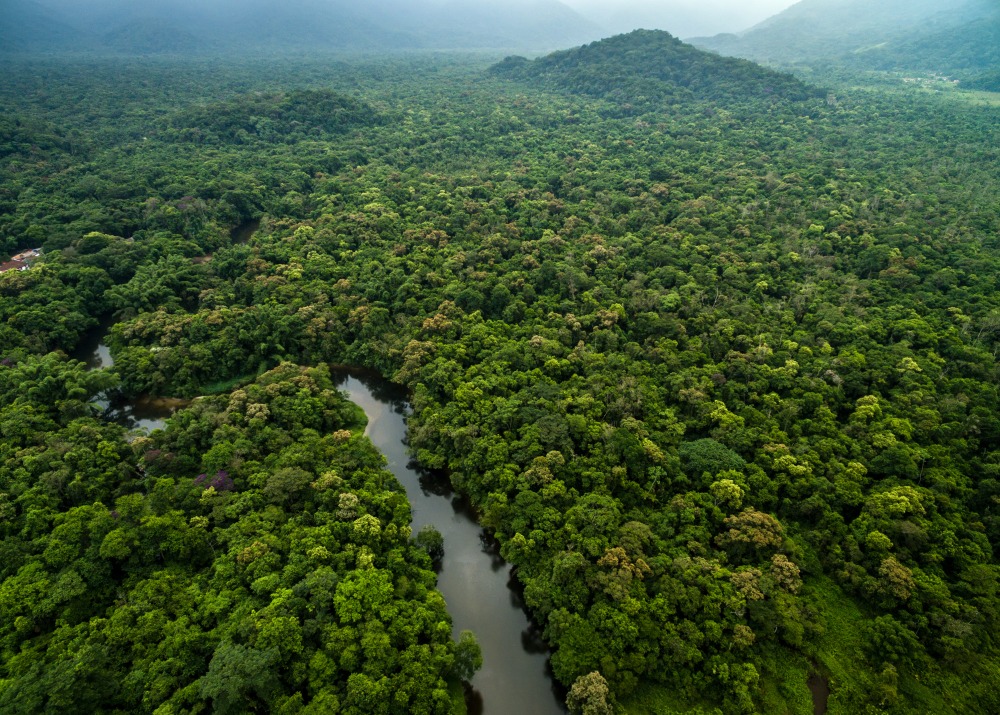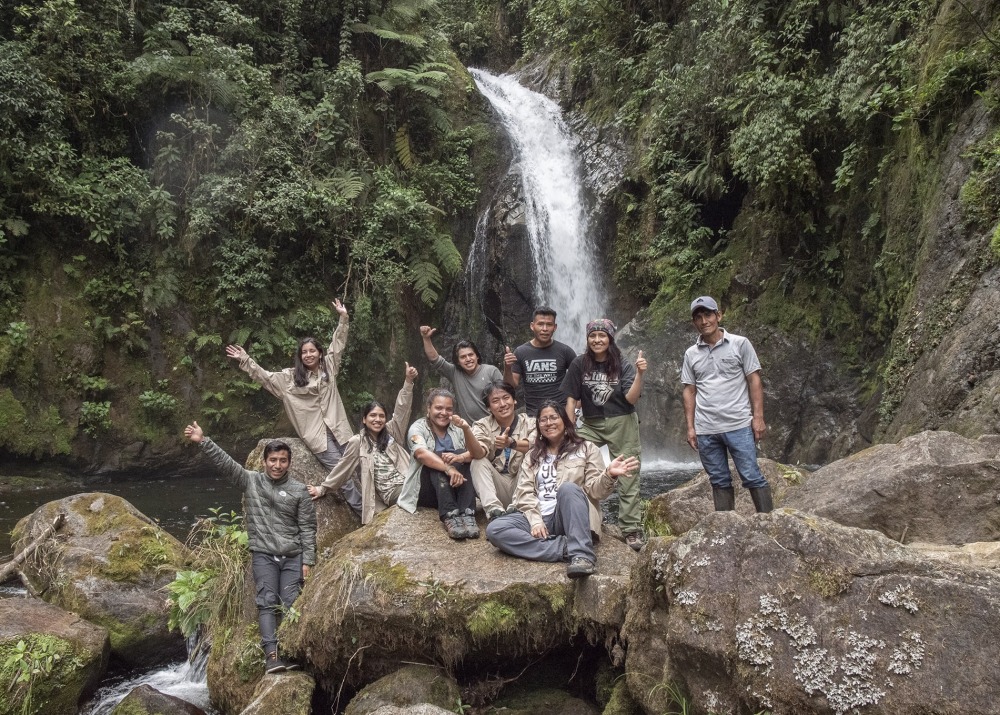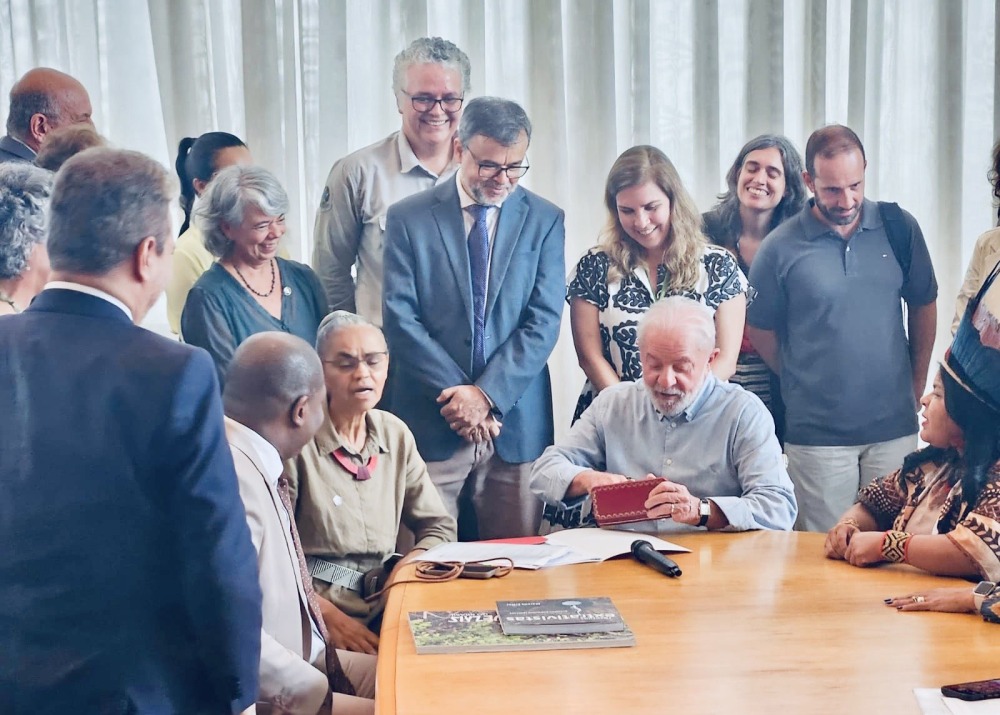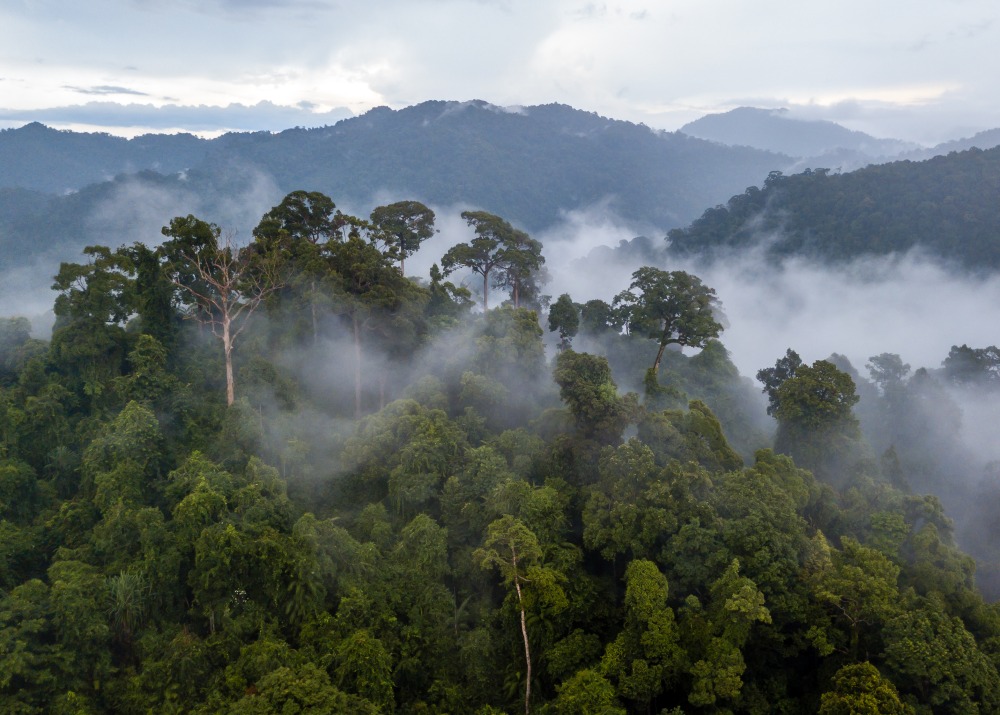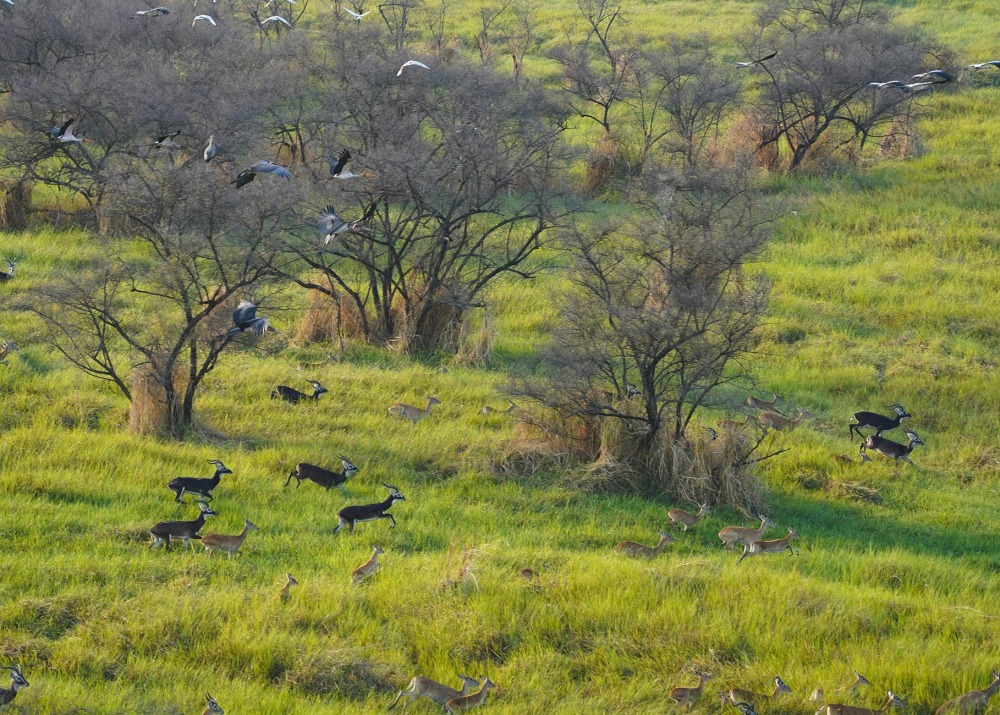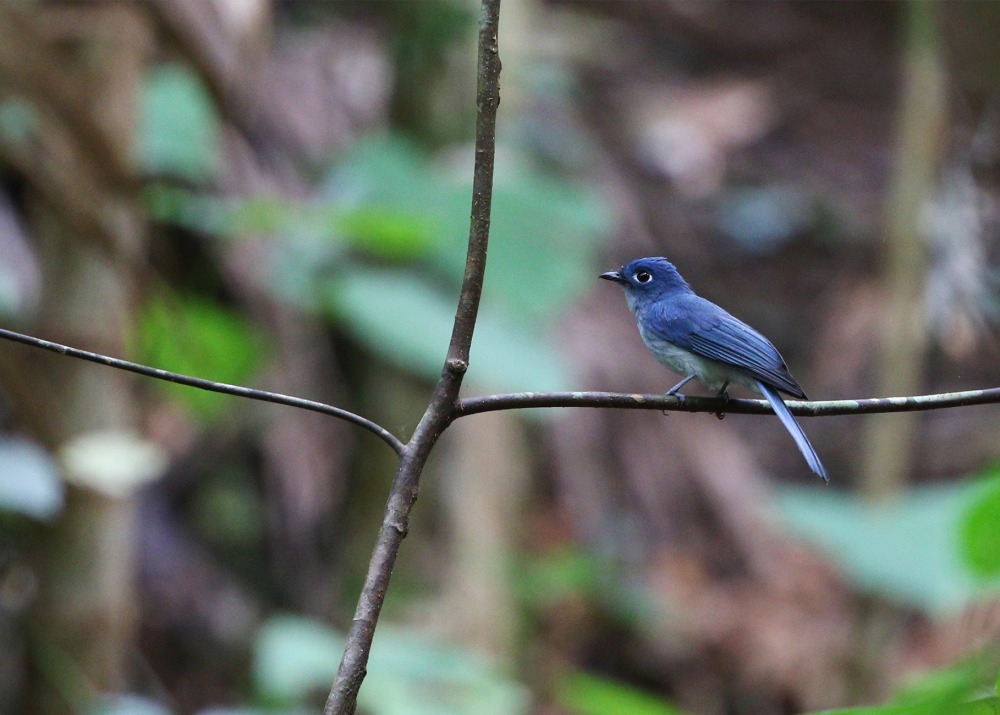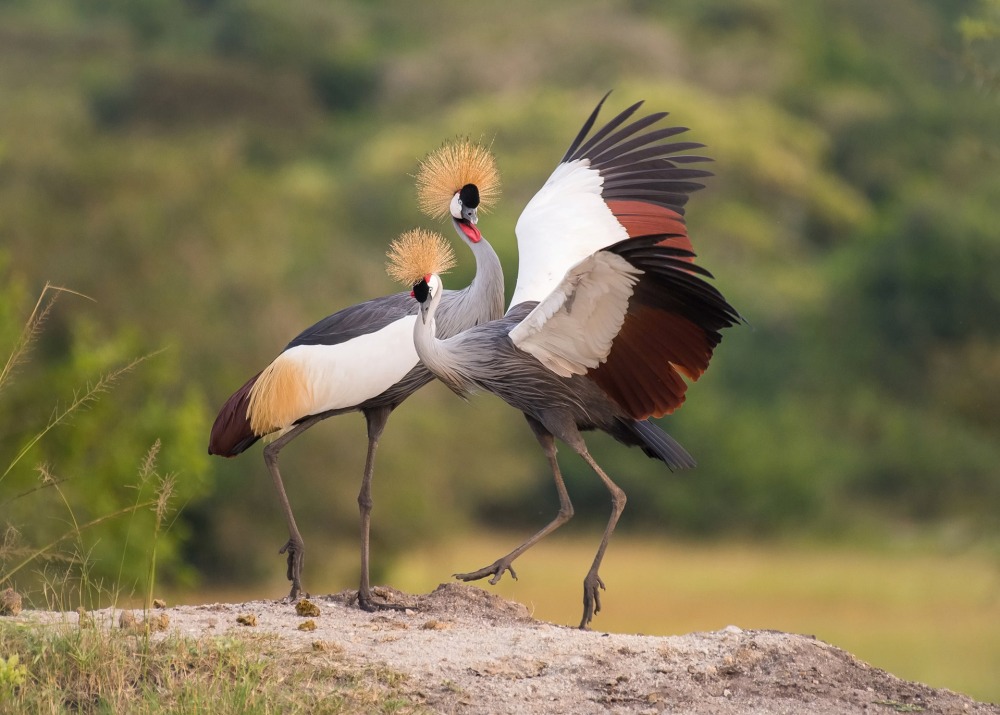Owed to Nature: Medicines from Tropical Forests
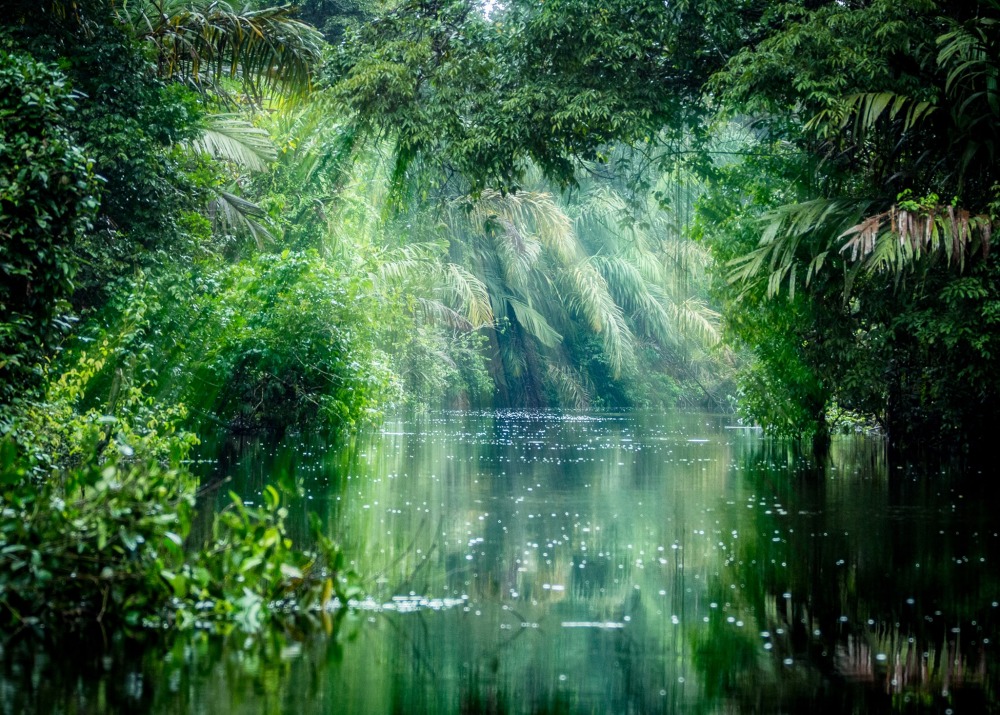
Watch The Healing Power of the Rainforest
When you next visit your local pharmacy to fill a prescription for yourself, a family member, or a friend, consider this: fully half of written prescriptions could not be filled without the cornucopia of gifts from the stunning biodiversity of the wild natural world. Half of the top ten prescription drugs in the U.S. are of animal, plant, or microorganism origin. Our debt to the biosphere is even more dramatically revealed when we look at cancer medications: a remarkable three-quarters of anti-cancer drugs spring from the web of life.
Nearly 90% of human diseases known to medical science can be treated with prescription drugs derived from nature. The benefits to humanity of nature-derived medicines are incalculable in terms of longevity, relief of suffering, and increase in the quality of life. And think of the hundreds of thousands of jobs provided to those that discover, grow, harvest, process, and market these medicinals. Billions upon billions of dollars have flowed into the world economy due to prescription medications arising from the planet’s largess of biological diversity. Spending in the U.S. in 2010 for prescription drugs only was $259.1 billion and medicinals derived from nature were a huge piece of this. Nature supports both our health and economy.
Many of nature’s medicines have become so integrated into our daily life that we think no more of them than we do a cell-phone, computers, or HDTV. Yet these medicines represent an irreplaceable cornerstone of the foundation of modern society. Prescription drugs are our most effective and most cost-efficient prevention and treatment of many leading diseases. We cannot imagine a world without antibiotics such as penicillins, cephalosporins, doxycycline, or erythromycin, without pain relievers, without muscle relaxants, without oral contraceptives, without cancer drugs like Taxol, without blood pressure lowering drugs like lisonopril, without digoxin for heart failure, without local anesthetics, without anticoagulants like coumarins for thrombosis, and the list goes on. A number of us might not be reading this article were it not for some of these medications. And if you believe healthcare is expensive now, think of the massive costs involved in caring for people prematurely incapacitated by, for instance, high blood pressure, cardiovascular disease, rampant infections, or diabetes.
The earth’s tropical forests themselves are major contributors to the treatment of disease and relief of suffering. Below we look at one modern medicine from the South American Amazon and another from across the Atlantic on the eastern edge of Africa.
Tropical Viper Venom: Defeating The “Silent Killer”
The deciduous tropical forests and savannahs of Argentina, Brazil, and Paraguay are the habitats of the feared viper Bothrops jararaca often called Fer-De-Lance because of the distinguishing lance-like head. Snakebites from B. jararaca often result in the victim’s collapse due to a massive drop in blood pressure. A cooperative effort between Brazilian biochemists, England’s Royal College of Surgeons, and pharmaceutical company Squibb worked out how the viper venom caused that blood pressure decrease and exactly what chemical in the venom was responsible. That knowledge led to abatement of morbidity and mortality from the pathological effects of chronic high blood pressure, also called hypertension–“the silent killer.”
The breakthrough was the synthetic chemical Captopril, crafted from the design template found in viper venom. Captopril was the first orally active member of a then-novel class of drugs called ACE inhibitors because of the biochemical component they block. In other words, this drug could be taken as a pill to reduce blood pressure to non-damaging levels–an enormous advance in medicine. As a group, Bothrops-derived ACE inhibitors represent one of the most effective and important drugs yet discovered since they improve the health and longevity of millions of people worldwide. In terms of their ability just to reduce morbidity and mortality, their impact is incalculable.
One billion people worldwide have high blood pressure, and projections are that by 2025 more than 1.5 billion will be victims of the disease (The Lancet; January 16, 2005). In the U.S., one out of three people have hypertensive disease. When hypertension goes uncontrolled or inadequately treated for prolonged periods, it increases the risk of heart attack, stroke, kidney failure, other cardiovascular diseases, and dementia.
There are now nine other close chemical relatives of captopril available for the treatment of hypertension. Widely familiar ones include lisonopril, the third most prescribed drug in the U.S., and enalapril. They all reduce blood pressure but differ in how they are handled by the human body.
Remarkably, these products originating from the ancient reptilian evolutionary struggle have therapeutic values in addition to life-sparing regulation of hypertension. They are useful in the therapy of congestive heart failure (CHF), they help patients with coronary or other vascular disease, regardless of hypertension problems, they may stave off atherosclerosis, and they can slow the progression of kidney disease in people with diabetes. In addition, there is good evidence that the long-term use of these venom-derived drugs may reduce the risk of developing colorectal cancer.
We seem to have inherited a built-in genetic aversion, even hatred, of reptiles, especially snakes. The reptilian-derived medicines discussed in the foregoing pages have saved vastly more lives in the past few decades than reptiles have taken throughout the entire history of humans. Perhaps it may be time to heed the advice of author Richard Dawkins. “Our brains are separate and independent enough from our genes to rebel against them…” (Richard Dawkins, The Selfish Gene).
Madagascar Periwinkle: Flower Of Life
Each year in the United States alone, some 2,900 children and adolescents are diagnosed with acute lymphocytic leukemia (ALL), the most common malignancy of childhood. Fifty years ago, a diagnosis of ALL was a nearly certain death sentence. Today, at least eighty percent of cases of this pediatric cancer can be cured. This dramatic reversal, like a phoenix arising from the ashes, is due to careful intensive scientific study and the remarkable medicines of the Madagascar periwinkle (Catharanthus roseus or Vinca rosea) that, in the U.S. alone, has rescued more than 100,000 children from an early death.
Known also as the rosy periwinkle, the Madagascar periwinkle is a shrub or sub-shrub up to three feet in height, endemic to Madagascar, but cultivated and naturalized over much of the tropics and subtropics. The Madagascar periwinkle should in no way be confused with Vinca minor, sometimes called common periwinkle, myrtle, or creeping myrtle, and often planted as a groundcover that has become an invasive exotic species threatening native plants in some parts of the U.S. The latter is a completely different species that is native to central and southern Europe and Turkey. Its chemical constituents are very different from the Madagascar periwinkle.
One of the molecular treasures isolated from the Madagascar periwinkle is Vincristine, which is chiefly responsible for medicine’s current ability to cure children with life-threatening ALL. Yet the therapeutic bounties of Vincristine don’t stop there as it is useful in the treatment of other cancers such as non-Hodgkin’s lymphomas, rhabdomyosarcoma, neuroblastoma, and Wilms’ tumor.
The Madagascar periwinkle also yields Vinblastine, another valuable antitumor agent that provides treatment options for cancers such as Hodgkin’s disease, several lymphomas, advanced carcinoma of the testis, and Kaposi’s sarcoma among others.
Vinblastine and Vincristine are of such complex molecular architecture that dependence on their laboratory chemical synthesis would make them prohibitively expensive for patient use. So even today, drug manufacturers rely on cultivation of the Madagascar periwinkle to provide these key medicinals.
Chemists have used the natural template supplied by the periwinkle to modify Vincristine and Vinblastine molecules into two other useful drugs: Vinorelbine for advanced small-cell lung cancer and fluorine-bearing Vinflunine, approved in Europe but not yet in the U.S., for therapy of advanced bladder cancer.
Our celebration of this victory over the dreaded disease ALL must be tempered by our knowledge of what has happened to the vibrant landscape that gifted us the Madagascar periwinkle. The island of Madagascar is a “hotspot” of biodiversity, harboring more than 250,000 species, three-quarters of which occur nowhere else. Since 1757, when French explorers brought the rosy periwinkle back to the royal court of France, the lands and biota of Madagascar have been ravaged so badly that it is likely that the world has lost “a priceless reservoir of plant and animal species” (Preston-Mafham, 1991). Ninety percent of its forests have been leveled, and life-sustaining soils have been washed away. How many medical advances have been irretrievably lost? Yet Madagascar still maintains such an astounding array of flora and fauna that it staggers biologists. There is much left to preserve in Madagascar and around the globe.
There is a legend that once the Italians placed rosy periwinkle garlands on the graves of infants, calling the periwinkle the “flower of death.” How ironic indeed that scientific investigation should reveal that the “flower of death” is in fact a “flower of life.”
Do We Know What We Are Losing?
The answer is NO!
Every day, some 80,000 acres of tropical rainforests are cleared, and another equivalent amount is degraded. Unknown numbers of species undergo extinction or are threatened with extinction. Mostly all of these occur without human knowledge, but there are some examples on record.
The U.S. National Cancer Institute funded a 1987 plant collection expedition on the island of Borneo in the Malaysian State of Sarawak. Among the samples obtained were those from the tree Calophyllum lanigerum var austrocoriaceum, an incredibly rare species. When extracts of this plant were discovered to show good antiviral activity toward the AIDS-causing human immunodeficiency virus (HIV), researchers returned to the site of the original collection to find that the tree was gone, cut down for firewood or building purposes. No more C. lanigerum could be located. Fortunately, however, an intense search finally led to additional samples of C. lanigerum in the Singapore Botanic Garden. Over a century ago, the British had planted several collected specimens.
Calanolide A, a complex natural product, is obtained from the bark and latex of Calophyllum lanigerum var austrocoriaceum, and it is now undergoing clinical trials for the treatment of HIV infection. Medical research narrowly escaped a major scientific loss.
How many undocumented losses have occurred? We can glean a sense from the experiences of two botanists working with the Missouri Botanical Garden. In 1978, Alwyn Gentry and Calaway Dodson surveyed a small ridge called Centinela in in the Ecuadorean rainforest and discovered about 90 previously unknown plant species that were endemic–that occurred nowhere else. They returned to find in 1986 that the ridge had been completely cleared of forest. There was no trace of the 90 endemic species, and they have been presumed to now be extinct. We can also reasonably expect that unknown numbers of associated insects and other species winked out with the demise of these plants.
How many times this catastrophe has been repeated in the human-dominated biosphere is unknown, but odds are that valuable biological and medical knowledge has disappeared at human hands into oblivion along with wonderful life-forms that evolved over untold ages of evolutionary struggle. Indeed, we have not a rudimentary knowledge what we are losing. There can be no more obligatory challenge than preserving life–all life–on Earth.
Learn More:
Sustaining Life, How Human Health Depends on Biodiversity, edited by Eric Chivian and Aaron Bernstein, Oxford University Press, 2008. ISBN13: 9780195175097
Madagascar: A Natural History, Ken Preston-Mafham 1991, Facts-On-File, New York.
www.endangeredspecieshandbook.org
Author: Paul F. Torrence article © 2012 Paul Torrence
Paul Torrence is Emeritus Professor of Chemistry and Biochemistry at Northern Arizona University. He received a Ph.D. in chemistry from the State University of New York at Buffalo in 1969 and then worked at the U.S. National Institutes of Health where he was a section chief. He is a member of the Board of Directors of the Wilderness Land Trust.
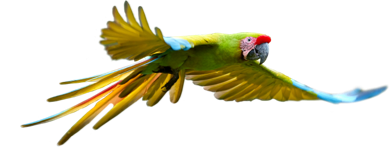
Sign up to receive the latest updates
"*" indicates required fields


